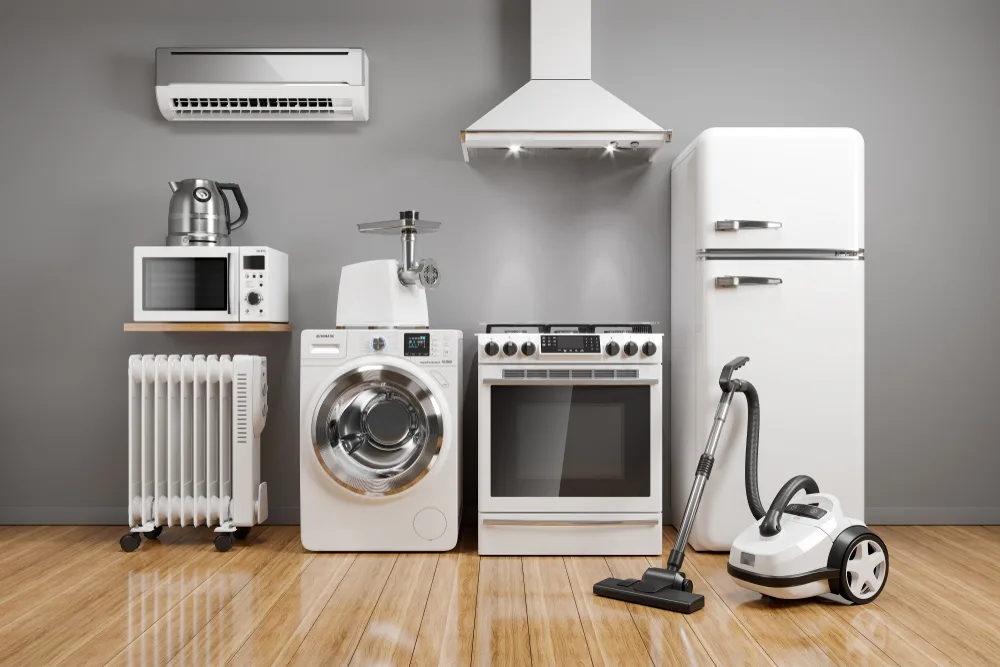
How insulation reduces consumer appliance costs
Consumer appliances play a big role in our lives, from providing us comfort to essential services. Without a kettle or stove, how would we make our warm cuppas on cold winter mornings? It’s a scary thought… But for many UK homeowners, the cost of living crisis is taking a toll and the use of many products mean higher consumer appliance costs. This is heightened by appliances that aren’t designed and manufactured to be efficient, both in performance and energy use.
Insulation is a critical component in consumer appliances that helps regulate temperature, increase useful life, and improve overall efficiency. It essentially acts as a barrier, or buffer, preventing the transfer of heat from the appliance’s interior to the surrounding environment or vice versa. By reducing heat loss or gain, insulation improves end-user safety and minimises the need for excessive energy consumption, thereby lowering energy bills and extending the lifespan of appliances.
Understanding the costs
Consumer appliances encompass a wide range of devices, including refrigerators, air conditioners, water heaters, and washing machines. These appliances are typically energy-intensive, and the costs associated with their operation and maintenance can be substantial. A breakdown of consumer appliance costs by usage highlights how, depending on the frequency of use, these costs can begin to build up and add to financial stresses.
The primary expense stems from the energy consumed by these appliances, which can account for a significant portion of a household or business’s monthly energy bills. It’s worth noting however, that aside from poor energy consumption, inefficient appliances may also require more frequent repairs and replacements, further increasing the overall costs. Insulation solutions in consumer appliances can effectively lower both the direct and indirect expenses associated with their usage.
By reducing heat transfer, insulation helps to maintain a consistent temperature within the appliance, minimising the need for excessive energy input. This improved energy efficiency not only reduces operational costs but also contributes to a safer and more sustainable approach to daily living. When consumer appliances are properly insulated, they can maintain optimal temperature levels for longer periods, reducing the frequency at which they need to cycle on and off and therefore reducing overall consumption.
Types of insulation used in consumer appliances
Consumer appliances employ various types of insulation to achieve optimal energy efficiency. The choice of insulation material depends on the specific appliance and its intended purpose. Here are some commonly used insulation types:
1) Foam insulation: Often used in refrigerators and freezers, foam insulation is a special chemical (consisting of isocyanate and polyol resin) that is sprayed into cavities, such as between panels. Once sprayed, the chemical reacts and turns into an expanded form that provides thermal resistance and helps maintain consistent low temperatures.
2) Fibreglass insulation: This type of insulation is commonly found in water heaters and air conditioning systems. It consists of fine glass fibres that trap air and prevent heat transfer. As well as a thermal insulator, fibreglass is also excellent for acoustic insulation, helping to reduce noise generated by appliances.
3) Vacuum-sealed panels: Vacuum insulation panels are highly efficient and are used in appliances where space is limited, such as mini-fridges. They consist of a core insulating material enclosed in an airtight envelope, which significantly reduces heat transfer due to the near-complete absence of air.
4) Mica-based insulation: At Elmelin, we specialise in insulation solutions for a wide range of sectors and applications, using mica as a core component thanks to its outstanding properties. We work closely with manufacturers of consumer appliances to create electrical and high-temperature insulation solutions that help them meet strict safety standards and regulations without compromising on performance and design.
Each insulation material has its unique properties and advantages, but they all contribute to reducing energy consumption and lowering consumer appliance costs.
Elmelin’s solutions
As previously mentioned, our consumer appliance solutions use mica-based insulation. The reasons for using mica stem from its excellent thermal and dielectric properties, enabling it to withstand high temperatures and voltages. Consumer appliances can reach dangerous temperatures, especially those that are designed for short usage being switched on for extended periods of time, such as hairdryers. Our bespoke insulation solutions are designed to not only make them safer, but also improve efficiency and enable the same level of performance. By reducing the amount of heat being lost and energy being consumed, as our mica-based insulation solutions for consumer appliances are an ideal choice for reducing costs.
Conclusion
By minimising heat transfer and improving energy efficiency, insulation significantly lowers energy consumption, leading to cost savings over the lifespan of the appliances. The cost of living crisis has meant appliance use has become less of an afterthought, and consumers are searching for products that are efficient, reliable and cost-effective. To find out more about the work we do and our insulation solutions, get in touch for a friendly chat.
